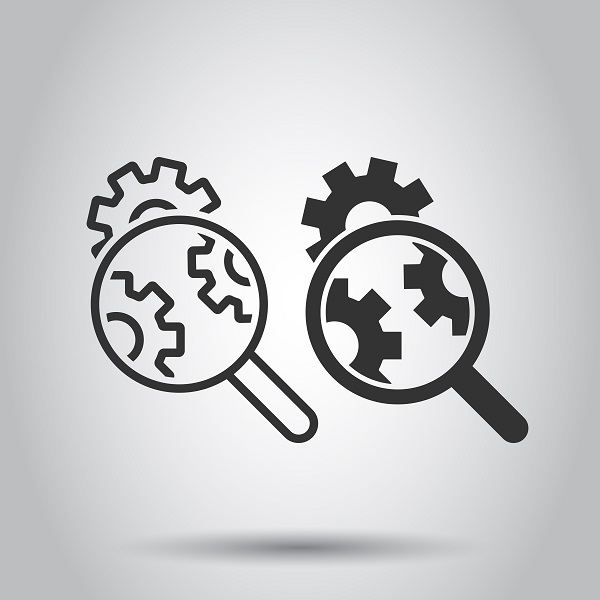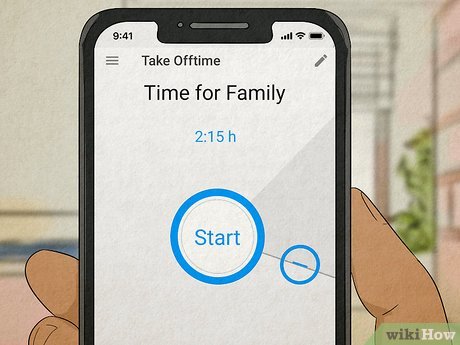If you’re experiencing technical SEO issues, there are a few things you can do to try and fix the problem. First, check to see if there are any crawl errors in Google Search Console. If so, identify the issue and try to fix it.
Next, take a look at your site’s structure and make sure it’s easy for search engines to index your content. Finally, check for any duplicate content on your site and consolidate or remove it as needed. By taking these steps, you can help improve your site’s SEO and avoid any potential penalties from search engines.
- Identify the technical SEO issues that are negatively impacting your website’s performance
- Research the root cause of each issue and develop a plan to address it
- Implement the changes needed to fix the issues, monitoring your website’s performance closely afterwards to ensure that the desired results are achieved
- Stay up-to-date on all things technical SEO so that you can quickly identify and fix any new issues that may arise in the future
SEO Audit: How to Fix Your Website’s Technical SEO Issues (Tutorial)
How Can I Improve My Technical Seo?
There are many ways to improve technical SEO, but some of the most important include optimizing your website for speed, improving your site’s structure and navigation, and ensuring that your site is accessible to both search engines and users. Let’s take a closer look at each of these technical SEO factors:
1. Optimize Your Website for Speed
One of the most important technical SEO factors is page speed. Search engines like Google give preference to faster websites in their search results, so it’s important to make sure your website loads quickly. There are a few ways to do this, including optimizing your images and using a content delivery network (CDN).
2. Improve Your Site’s Structure and Navigation
Another important technical SEO factor is site structure. A well-structured website is easier for search engines to crawl and index, which can lead to better search engine rankings.
Additionally, a well-structured website is also easier for users to navigate, which can improve the user experience on your site. You can improve your site’s structure by adding internal links between pages and using descriptive titles and meta tags.
3. Ensure That Your Site Is Accessible to Both Search Engines and Users
It’s important to ensure that both search engines and users can access all the content on your website. This includes making sure that all pages are reachable via links from other pages on your site as well as ensuring that there are no broken links or 404 errors.
What are Seo Technical Issues?
There are many different types of SEO technical issues that can occur on a website. Some common examples include:
1. Indexation problems – This can happen if your website is not being indexed properly by search engines, which can prevent your pages from appearing in search results.
2. Crawling issues – If search engines are having trouble crawling and indexing your website, this can also impact your rankings and visibility.
3. On-page optimization problems – If your website’spages are not optimized correctly for target keywords, this can affect your ability to rank well for those terms.
4. Off-page optimization problems – Issues with off-page SEO factors such as link building and social media engagement can also impact your site’s SEO performance.
What is the First Step to Take If You are Concerned About Your Technical Seo?
If you are concerned about your technical SEO, the first step is to check your website for any potential issues. This can be done by using a website audit tool, such as Google Search Console or Screaming Frog. Once you have identified any potential issues, you should then work on fixing them.
Where Have You Seen the Most Technical Seo Errors?
If you’re like most SEOs, you’ve seen your fair share of technical SEO errors. Here are some of the most common errors we see, along with tips on how to fix them:
1. Incorrect use of Robots.txt
The robots.txt file is used to instruct search engine bots which pages on your site they can and cannot crawl. It’s important to get this file right, as an incorrect robots.txt file can prevent your pages from being indexed properly (or at all!).
Here are some common mistakes we see with robots.txt files:
• Blocking access to important pages: Make sure that you’re not accidentally blocking access to any important pages on your site (such as your home page or product pages). The only time you should be blocking access to a page is if it’s truly not meant for public consumption (for example, a thank-you page after a form submission).
• Allowing access to disallowed directories: If there are certain directories on your site that you don’t want search engines to index (such as a “temp” directory), be sure to explicitly disallow them in your robots.txt file.
Otherwise, search engines may index the contents of those directories, which could lead to duplicate content issues down the road.
2. Duplicate content issues
Duplicate content is one of the most common technical SEO problems we see.
Essentially, duplicate content refers to any two pieces of content that are identical or very similar in nature. This can happen when multiple versions of a page exist (for example, http://example.com/ and http://www .example .com/), or when multiple sites publish the same or very similar content without providing attribution back to the original source . In either case , duplicate content can confuse search engines and result in lower rankings for your site .
To avoid duplicate content issues , make sure that each piece ofcontent on your site is unique , and if you do have duplicates , use canonical tags appropriately t o point search engines towardsthe original version .
3 . Incorrect useof 301 redirects 301 redirects are usedto permanently direct traffic from one URLto another .
They ‘re commonlyused when changing domainsor migrating websites from HTTPto HTTPS . When done correctly ,301 redirects will preserveyour existing traffic and help toprevent any loss in ranking duringthe transition period .

Credit: www.boostability.com
On-Page Seo Issues
Most on-page SEO issues are easily avoidable and stem from common mistakes that website owners make. Here are some of the most common on-page SEO issues to watch out for:
1. Not Using Keywords Strategically
One of the most important aspects of on-page SEO is using keywords throughout your website content. However, simply including a list of keywords is not enough – you need to use them strategically in order to improve your chances of ranking high in search engine results pages. This means using them in titles, headings, and throughout the body of your content in a way that sounds natural and flows well.
Overstuffing keywords, on the other hand, will not only result in poor quality content but can also get you penalized by Google.
2. Poorly Optimized Title Tags and Meta Descriptions
Your title tags and meta descriptions are what show up in search engine results pages (SERPs), so it’s important to make sure they’re optimized for both users and search engines.
This means including relevant keywords while still making them readable and enticing enough to encourage clicks through to your website. Keep in mind that your title tags should be no more than 60 characters long, while meta descriptions should be no more than 160 characters. Anything longer risks getting cut off in SERPs.
3. Neglecting Image Optimization
Images can be a great addition to your website content, but if they’re not properly optimized they could be doing more harm than good when it comes to your SEO efforts. Make sure you include relevant keywords in image file names as well as “alt text” which is used by search engines to understand what an image is about if they can’t load it for some reason.
Creating informative captions for images can also help improve your on-page SEO since this text will be picked up by search engine crawlers too.
How to Fix Seo Issues
If you’re running a website, chances are you want it to rank high in search engine results pages (SERPs). Unfortunately, that’s not always easy to achieve. Often, SEO issues can get in the way and prevent your site from ranking as well as it could.
But don’t despair! There are ways to fix common SEO issues. In this blog post, we’ll go over some of the most common SEO problems and how to solve them.
One common issue is duplicate content. This happens when there is more than one version of a piece of content on your site (or on the web). This can confuse search engines and make it hard for them to determine which version is the original and should be ranked highest.
To fix this issue, you need to find all instances of duplicate content on your site and either remove them or canonicalize them. Canonicalization means choosing one version of the content and tagging it as the original using a rel=”canonical” link element. This tells search engines that this is the preferred version of the content and should be given priority in SERPs.
Another common problem is thin content. This is when a page has very little useful information on it (usually because it’s been keyword-stuffed with keywords that don’t actually appear in the text). Thin content doesn’t provide value to users or search engines, so it’s important to address this issue if you want your site to rank well.
The solution here is usually to add more helpful, relevant information to the page. You can also try combining thin pages into single pages with more comprehensive information. Either way, adding quality content will help improve your site’s ranking potential.
Website Technical Issues Message
Websites are a vital part of any business in today’s economy. They provide customers with information about products and services, allow for online purchases, and act as a marketing tool. A website that is not functioning properly can cause major problems for a business, including lost sales and revenue.
There are many different types of technical issues that can occur on a website. These range from simple things like broken links to more complex issues like database errors. No matter what the issue is, it needs to be fixed as soon as possible in order to minimize the impact on the business.
The first step in fixing any website issue is to identify the problem. This can sometimes be difficult, especially if the site is complex or has been customized. Once the problem has been identified, it can then be fixed by making changes to the code or settings on the server.
In some cases, it may be necessary to contact a web developer or hosting company for assistance.
It is important to test the website after making any changes to ensure that the issue has been resolved. If not, further troubleshooting will be needed until the problem is completely fixed.
Website technical issues can be frustrating, but they don’t have to ruin your business. With quick action and careful troubleshooting, most problems can be resolved quickly and without too much disruption.
Conclusion
If you’re running a website, it’s important to make sure your technical SEO is up to par. Technical SEO refers to the backend of your website and making sure it’s optimized for search engines. This includes things like site speed, indexing, and crawlability.
There are a few ways you can go about fixing technical SEO issues. First, check your site speed and improve it if needed. Second, make sure your site is properly indexed by submitting an XML sitemap.
And finally, ensure that your site is crawlable by using Google Search Console. By following these steps, you can help improve your website’s ranking in search results.



